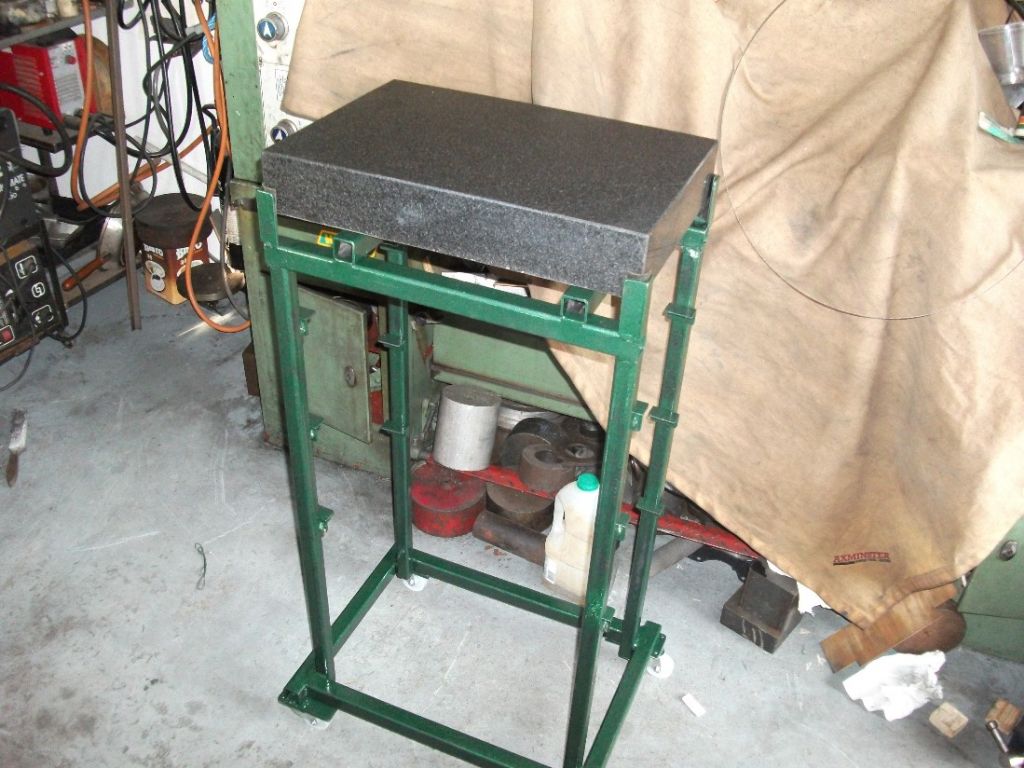The mount that I made for The WaterWorks Museum was basically a slightly oversize 18" x 24" frame with mitred welded corners, made of 2" x 2" angle iron with the web pointing down. Along the centre line of each side, further pieces of 2 x 2 angle were welded. Finally, the welds were dressed level.
Onto each corner was welded a piece of angle iron, (1" x 1" to provide a location. At the bottom of these corner legs had been welded a plate with a tapped hole. Into each tapping went a levelling screw.
to provide a location. At the bottom of these corner legs had been welded a plate with a tapped hole. Into each tapping went a levelling screw.
All the ironwork was then painted.
Since the granite was thin, (only 1" thick) it was placed onto a sheet of 3/8" plywood. To minimise the risk of stressing the granite, the plywood was given a fairly thick, fluid, coat of plaster, before placing the granite on it. In this way the granite was supported over all its area, and sitting on a firm base. Once in situ, the table was levelled in both planes, usng the corner screws.
If the granite is stressed, it will not be absolutely level. Here we are probably only looking for accuracy a little better than a tenth of a thou, rather than the hundreths or thousandths required by Industry. But if the surface plate is not flat, you will never achieve a reasonable standard of accuracy. (What use is a micrometer where the pitch of the thread in the barrel is inconsistent?)
A simple plywood cover (given two coats of varnish) with a small outer lip, to locate it, was placed on the granite. varnished.
HTH
Howard
Howard Lewis.










